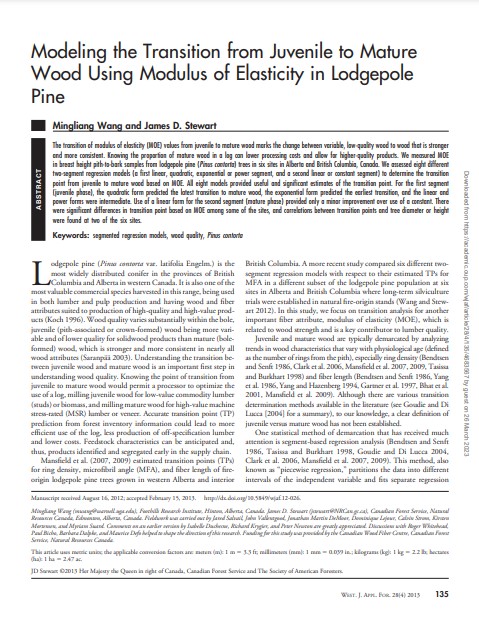Modeling the transition from juvenile to mature wood using modulus of elasticity in lodgepole pine
Bosque Modelo:
Foothills
Temática:
Desarrollo humano
Tipo de documento:
Artículo científico
Resumen
The transition of modulus of elasticity (MOE) values from juvenile to mature wood marks the change between variable, low-quality wood to wood that is stronger and more consistent. Knowing the proportion of mature wood in a log can lower processing costs and allow for higher-quality products. We measured MOE in breast height pith-to-bark samples from lodgepole pine (Pinus contorta) trees in six sites in Alberta and British Columbia, Canada. We assessed eight different two-segment regression models (a first linear, quadratic, exponential or power segment, and a second linear or constant segment) to determine the transition point from juvenile to mature wood based on MOE. All eight models provided useful and significant estimates of the transition point. For the first segment (juvenile phase), the quadratic form predicted the latest transition to mature wood, the exponential form predicted the earliest transition, and the linear and power forms were intermediate. Use of a linear form for the second segment (mature phase) provided only a minor improvement over use of a constant. There were significant differences in transition point based on MOE among some of the sites, and correlations between transition points and tree diameter or height were found at two of the six sites.
Información Bibliográfica
Autor:
Wang, M., & Stewart, J.D.
Revista:
Western Journal of Applied Forestry
Año:
2013
N°:
4
País :
Canadá
Páginas:
135 - 142
Volumen:
28
Idioma:
Ingles
Palabras claves
segmented regression models, wood quality, Pinus contorta





